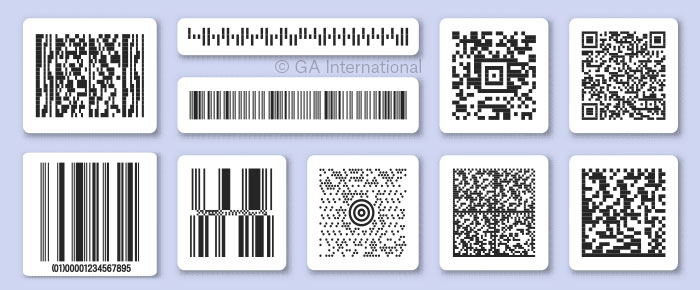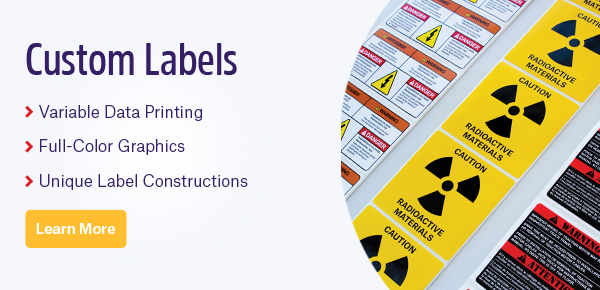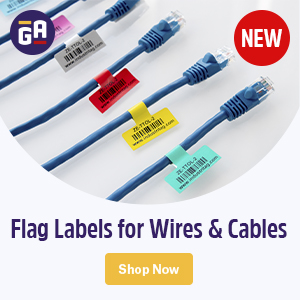 Barcodes are one of the most efficient ways of identifying items throughout all industrial sectors, including retail, construction, electronics, chemical manufacturing, and the automotive sector. Using labels that withstand a variety of conditions, including high heat, chemical exposure, and intense weather, in conjunction with inventory management systems and barcode printing software, it’s possible to develop a thorough identification system that prevents errors and enhances productivity. Designing barcodes is often a simple task when aided by barcode printing software like BarTender; however, it’s also worth understanding how they work in case troubleshooting is required. One of the most important but often overlooked parts of a barcode is the Quiet Zone, a region where refinement may be necessary to ensure consistent and accurate scanning.
Barcodes are one of the most efficient ways of identifying items throughout all industrial sectors, including retail, construction, electronics, chemical manufacturing, and the automotive sector. Using labels that withstand a variety of conditions, including high heat, chemical exposure, and intense weather, in conjunction with inventory management systems and barcode printing software, it’s possible to develop a thorough identification system that prevents errors and enhances productivity. Designing barcodes is often a simple task when aided by barcode printing software like BarTender; however, it’s also worth understanding how they work in case troubleshooting is required. One of the most important but often overlooked parts of a barcode is the Quiet Zone, a region where refinement may be necessary to ensure consistent and accurate scanning.
What is a Quiet Zone?
The Quiet Zone is the empty space surrounding the barcode that allows the scanner to determine where to begin and end scanning, also known as white space. Barcodes require a defined quiet zone to ensure the scanner doesn’t pick up additional signals next to the coded bars or pixels. Without a large enough quiet zone, scanner errors may appear by preventing the scanner from accurately locating and decoding the barcode symbology.
Quiet Zone requirements
Even before designing barcodes, it’s essential to determine the minimal Quiet Zone your barcodes will need. Each type of barcode has a different quiet zone requirement, usually listed as a multiple of “X”, denoted as the width of the narrowest bar or space of the symbol. For 2D barcodes, the quiet zone is a multiple of the pixel width.
1D barcodes:
The minimum requirements for 1D barcodes are as follows:
- Code 39: 10X
- Code 128: 10X
- Interleaved 2 of 5: 10X or 0.1 inches, whichever is greater
- UPC-A: 9X
- UPC-E: Left, 9X; Right, 7X
- EAN-13: Left, 11X; Right 7X
- EAN-8: 7X
- UPC/EAN Supplementals: Right, 5X
- GS1 DataBar: None (technically 1X as part of a fixed pattern on the left and right parts of the symbol)
It’s worth noting that a Quiet Zone is not necessary above or below 1D barcodes. However, for Interleaved 2 of 5 barcodes, thick bars called Bearer Bars may be added to the top and bottom of the symbol to reduce misreads from laser-based scanners.
2D barcodes:
The minimum requirements for 2D barcodes are as follows:
- Aztec Code: None
- Data Matrix: 1X
- Micro QR Code: 2X
- QR Code: 4X
- PDF417: 2X
- Micro PDF417: 1X
For the Aztec Code, no Quiet Zone requirement is necessary because of the finder pattern it utilizes in combination with format information encoded within the symbol, allowing decoding algorithms to identify the size of the symbol.
How to avoid issues with Quiet Zones
Efficient planning is vital when designing barcodes and accounting for Quiet Zones. It is recommended to use a dedicated barcode design software, such as BarTender, which provides an easy-to-use platform for generating and printing barcodes of all types. When printing barcodes, always try to reduce unexpected marks or bleeding from either the environment around the barcode or the barcode ink itself. To prevent bleeding, always consider the conditions the barcode may encounter, as extreme temperatures and exposure to solvents (including water) can cause low-quality printouts to bleed. It is therefore recommended to use thermal-transfer printouts whenever possible, as these types of printers provide optimal resistance against temperature changes as well as chemicals and abrasion.

